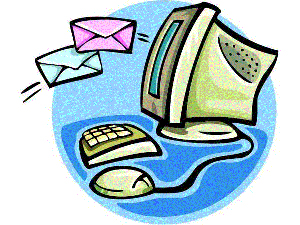
If you’re like many entrepreneurs, concern (or even distress) about the size of your email list is a major issue. And for good reason.
Your email list — which is a list of folks that have given you permission to email or otherwise contact them — is the foundation of business success. Those are the people who are interested in building a relationship with you and eventually may turn into a customer of yours. The more people on that list, the easier it is to build a profitable, sustainable business.
So how DO you grow that list? Well, one tried-and-true strategy is to come up with a free gift or “taste” of your offer in exchange for getting your ideal client’s contact information. (An example of this is a special report or a video or audio recording and you set up an opt-in page to collect the name and email address in exchange for giving them access to that content.)
The problem is, how do you figure out what the best gift should be? Below are 3 tips to help you do exactly that:
1. Create your gift around what’s keeping your ideal client’s up at night. No matter what it is you sell, there’s one major problem keeping your ideal client’s up at night that your products or services would solve. That’s what you want to focus on — what I call the “gateway” problem.
This is important to remember — while I know some of you reading this offer very complicated and thorough coaching or healing programs that end solving lots of issues your ideal clients have, they didn’t actually buy the your program because of ALL those results. They bought it because of ONE major issue they were having, and now that your program solved other problems, they’re really excited about it but that’s not what caused them to buy your program in the first place.
If you try and get too cute or complicated in your initial gift, your ideal clients aren’t going to be that interested in giving you their name and email for the gift (much less actually going through what you put together).
2. Spend some time crafting a hooky title for your gift. The title is what is going to catch their eye and encourage them to read more about what you’re offering for free.
So how do you create a hooky title? Go back to what’s keeping your ideal clients up at night. For instance, you’re a weight-loss coach, you could focus on 5 foods that make you fat. Or if you’re a business coach you could focus on 5 mindset traps keeping you from building a successful business.
Now, what’s keeping your ideal clients up at night is only the first step. As you can see by my examples there are a couple of other tips to help you craft a hooky title:
* Putting a number in there. It helps to have X tips or steps or secrets or strategies. Adding that detail makes it more specific for your ideal clients plus it implies you’ve laid out the information in a way that makes sense for them to consume.
* The smaller the slice, the better. Notice I focus on 5 foods that make you fat or 5 mindset traps. Not EVERYTHING that is making you fat or EVERYTHING that is keeping you from growing a business. One piece of the puzzle. Again, that specificity makes it very clear exactly what your ideal clients are getting, and the more clear they are, the more likely it is they’ll want it (if it appeals to them).
3. Don’t be afraid to make it content-rich — but don’t give away the store. Okay, so how on earth can you do that?
The best way to do this is to completely answer whatever you promised them you would answer, but your answer should open up another question. So, for the mindset traps, you tell them exactly what the mindset traps are, but if they want more personalized help to avoid them, they’ll need your product. Or you share what the 5 foods are, but then you may need something to replace those foods (or maybe eliminating those foods isn’t enough and they’ll need more help) and that’s where your program comes in.
The problem I’ve seen with content sharing is either people clearly hold back information so it’s obviously incomplete (which irritates your ideal clients) or they share too much information and their ideal clients end up feeling satisfied and have no need to take the next step (EVEN if it’s a false sense of satisfaction).
Again, this can be helped if you narrow down what your gift is covering to a very small piece of the puzzle. If you do that, you (hopefully) won’t share so much your ideal clients feel complete, and if you answer that small piece completely, they’ll feel like you gave them a great deal of content.
